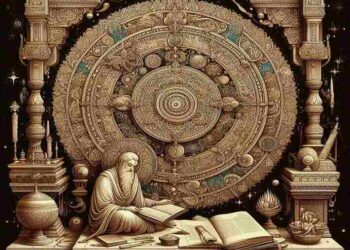Table of Contents
ToggleIntroduction
The Role Of ChatGPT In Analyzing Classic Literature For centuries, literary studies have been based on the ageless themes, complex characters, and rich language of classic literature. Our perspective of the human condition, culture, and society is still shaped by works like Virginia Woolf’s Mrs. Dalloway, Leo Tolstoy’s War and Peace, Homer’s Iliad, and William Shakespeare’s Hamlet.
New technology and tools are being developed to help with the analysis and interpretation of these works as the field of literary criticism develops. One such tool is ChatGPT, an OpenAI language model that has shown itself to be a tremendous help in the field of literary interpretation.
ChatGPT’s Capabilities in Literary Analysis
1. Contextualizing Literature
One of the greatest challenges in analyzing classic literature is understanding the historical, social, and political contexts in which the work was created. Classic texts often contain references to events, customs, and ideologies that may be unfamiliar to modern readers. ChatGPT, with its extensive training on a vast corpus of texts, can provide context for readers, helping them understand the social, political, and philosophical movements that influenced an author’s work.
For example, when analyzing a novel like Moby-Dick by Herman Melville, ChatGPT can offer insights into the 19th-century whaling industry, the influence of Romanticism, and the significance of the novel’s philosophical musings on existentialism and fate. This can deepen a reader’s understanding of the themes of obsession, revenge, and the natural world in the text.

2. Analyzing Themes and Motifs
Classic works often explore complex and multifaceted themes such as love, power, justice, and identity. ChatGPT can help readers identify and explore these themes in-depth, providing a structured analysis of how they are developed throughout the text. For example, in Shakespeare’s Macbeth, ChatGPT can highlight the themes of ambition, guilt, fate, and the supernatural, showing how these themes interact and evolve as the play progresses.
Additionally, ChatGPT can explore recurring motifs—such as the use of light and dark imagery in Romeo and Juliet—and explain how these motifs contribute to the overall meaning of the work. By identifying these patterns and providing explanations, ChatGPT assists readers in recognizing the deeper layers of a text.
Read more
3. Character Analysis
Classic literature is often defined by its memorable and complex characters. ChatGPT can offer nuanced character analyses by examining their motivations, psychological profiles, and relationships with other characters. For instance, in Crime and Punishment by Fyodor Dostoevsky, ChatGPT can delve into the psyche of Raskolnikov, discussing his internal struggle, moral dilemmas, and eventual redemption. Similarly, in Pride and Prejudice by Jane Austen, ChatGPT can analyze the character development of Elizabeth Bennet, exploring her evolution from prejudice to understanding.
ChatGPT can also facilitate comparative character analysis, drawing parallels between characters from different texts or examining how they embody particular literary archetypes, such as the tragic hero or the antihero. These analyses can help readers gain a deeper understanding of character motivations and relationships, which are often central to the plot and themes of classic literature.
4. Examining Literary Devices
Classic literature is renowned for its use of literary devices such as symbolism, metaphor, irony, and allegory. ChatGPT can assist in identifying these devices and explaining their significance. For example, in The Great Gatsby by F. Scott Fitzgerald, ChatGPT can discuss the symbolism of the green light, the valley of ashes, and the eyes of Dr. T.J. Eckleburg, and how these symbols contribute to the novel’s critique of the American Dream.
ChatGPT can also analyze the use of narrative techniques, such as unreliable narration in The Catcher in the Rye by J.D. Salinger, or stream of consciousness in Mrs. Dalloway by Virginia Woolf. By highlighting these techniques, ChatGPT enables readers to understand the stylistic choices made by the author and their effect on the reader’s perception of the story.
5. Exploring Philosophical and Ethical Questions
Many classic works engage with deep philosophical and ethical questions, challenging readers to think critically about concepts like morality, justice, and the nature of existence. ChatGPT can facilitate discussions on these topics by offering interpretations of key passages and exploring the philosophical underpinnings of the text. For instance, in The Brothers Karamazov by Fyodor Dostoevsky, ChatGPT can explore the novel’s treatment of free will, the existence of God, and the problem of evil, guiding readers through the complex ethical dilemmas faced by the characters.
6. Helping with Comparative Literary Studies
ChatGPT can also be valuable for comparative literary studies, where scholars examine the similarities and differences between texts from different cultural, temporal, or geographical contexts. For example, it can compare the themes of fate and free will in Oedipus Rex by Sophocles and Hamlet by Shakespeare, or the depiction of the hero’s journey in The Odyssey by Homer and The Divine Comedy by Dante Alighieri. By highlighting these connections, ChatGPT helps readers uncover broader literary patterns and influences across time and space.
7. Creating Study Aids and Discussion Prompts
In addition to its analytical capabilities, ChatGPT can also assist in generating study aids, such as summaries, character breakdowns, and discussion prompts. For students reading Frankenstein by Mary Shelley, ChatGPT could generate a summary of the novel, outline the key events in each chapter, and propose questions for group discussion. This can serve as a valuable resource for both individual study and classroom discussions, providing students with a structured way to approach complex texts.
Benefits of Using ChatGPT for Literary Analysis
1. Accessibility and Convenience
ChatGPT provides instant access to a wealth of information and analysis. Rather than spending hours scouring academic journals or secondary sources, users can interact with the AI in real-time, receiving tailored explanations and insights on demand. This can be particularly beneficial for students who may not have access to extensive academic resources or for those who are new to a particular work of literature and need a quick introduction.
2. Enhanced Understanding
ChatGPT’s ability to break down complex texts and offer multiple interpretations can help readers grasp subtle nuances and layered meanings. By providing a range of insights—whether historical, philosophical, or literary—ChatGPT enables readers to approach a text from different angles and deepen their understanding of the work as a whole.
3. Supplementing Traditional Analysis
While ChatGPT is not a replacement for traditional literary analysis, it can serve as a complementary tool. Scholars and students can use the insights generated by ChatGPT as a starting point for more in-depth research, furthering their own analysis and contributing to academic discourse. This allows for a more comprehensive approach to literary study, combining the strengths of AI with human critical thinking.
4. Interdisciplinary Connections
ChatGPT’s vast database of knowledge allows it to make connections between classic literature and a wide range of disciplines. For example, it can draw upon history, psychology, philosophy, and even the sciences to offer multidisciplinary interpretations of a text. This interdisciplinary approach enriches literary analysis, helping readers see connections between literature and other fields of knowledge.
Limitations and Ethical Considerations
1. Lack of Human Intuition
While ChatGPT can analyze texts and offer valuable insights, it lacks the intuition and lived experience that human scholars bring to their analysis. Literary analysis often involves subjective interpretation, and AI-generated responses are limited by the data it has been trained on. ChatGPT’s analyses may lack the depth or originality that human scholars can provide, especially when it comes to the emotional or cultural resonance of a text.
Read more
2. Dependence on Training Data
ChatGPT’s understanding of classic literature is shaped by the texts it has been trained on. While it has access to a vast range of literary works, it may not always have access to the most recent scholarship or interpretations. Additionally, its responses may reflect biases or limitations inherent in its training data, which could affect the objectivity and accuracy of its analysis.
3. Overreliance on AI
As AI tools like ChatGPT become more integrated into literary analysis, there is a risk of overreliance on these technologies. Students and scholars must remain critical of AI-generated analyses and ensure they are supplementing them with their own readings and interpretations. AI should be seen as a tool to assist, not replace, the thoughtful, human-driven process of literary criticism.

Conclusion
ChatGPT represents an exciting new frontier in the field of literary analysis. Its ability to offer contextual insights, identify themes, analyze characters, and explore philosophical questions makes it an invaluable resource for anyone studying classic literature.
The Role Of ChatGPT In Analyzing Classic Literature However, it is essential to recognize its limitations and use it as a complement to, rather than a replacement for, traditional scholarly analysis. As AI continues to evolve, its role in literary studies will likely expand, opening new possibilities for the way we engage with literature from the past.
Read more
(FAQ)
1. Can ChatGPT replace traditional literary criticism?
No, ChatGPT cannot replace traditional literary criticism. It is a helpful tool that can provide insights and assist in analysis, but it lacks the human intuition and cultural understanding that scholars bring to their work.
2. How can ChatGPT help students studying literature?
ChatGPT can help students by providing context, summarizing key ideas, identifying themes and motifs, analyzing characters, and generating discussion prompts. It can serve as a valuable supplement to traditional study methods.
3. Is ChatGPT accurate in its analysis of classic literature?
ChatGPT provides accurate and insightful analysis based on its training data. However, it may not always be up-to-date with the latest scholarly interpretations, and its responses should be cross-referenced with other sources for a more comprehensive understanding.
4. Can ChatGPT help with comparative literary analysis?
Yes, ChatGPT is well-suited for comparative literary analysis. It can draw parallels between different texts and identify common themes, motifs, and narrative techniques.
5. What are the limitations of using ChatGPT for literary analysis?
ChatGPT lacks the emotional and cultural insights that human critics bring to their analyses. It also relies on its training data, which may introduce biases or gaps in its knowledge. Overreliance on AI for analysis can limit creativity and originality in interpretation.
















